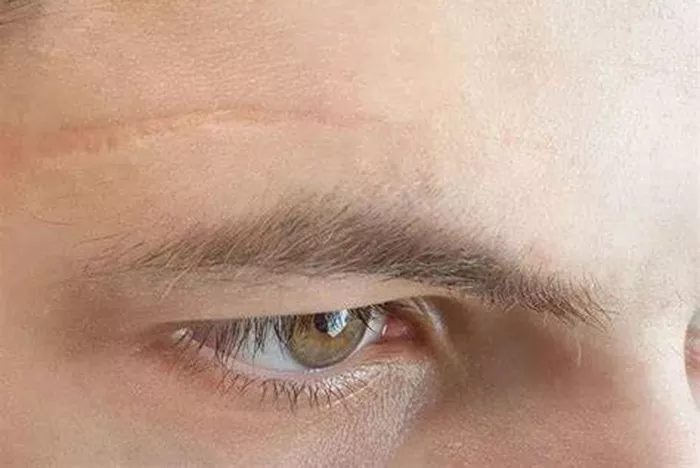Scars, whether from injury, surgery, or skin conditions, are an inevitable part of the body’s natural healing process. They serve as a visible reminder of past trauma and can vary widely in appearance, size, and texture. But do scars ever truly fade away, leaving the skin as it was before? This question has intrigued scientists, medical professionals, and individuals alike for generations.
Understanding Scars
To comprehend whether scars can fully heal, it’s crucial to understand how they form. When the skin is injured, the body initiates a complex repair process involving inflammation, cell proliferation, and tissue remodeling. During this process, collagen fibers are laid down to bridge the gap in the skin, forming a scar.
Types of Scars
Not all scars are created equal. There are several types of scars, including:
Keloid Scars: These scars extend beyond the original injury site and are characterized by their raised, thick appearance.
Hypertrophic Scars: Similar to keloid scars, hypertrophic scars are raised and red but typically remain within the boundaries of the original wound.
Atrophic Scars: These scars result from a loss of tissue and appear as depressions in the skin, such as those caused by acne or chickenpox.
Contracture Scars: Typically occurring after burns, contracture scars tighten the skin, potentially limiting movement.
Each type of scar has its own unique characteristics and potential for healing.
Factors Affecting Scar Healing
Several factors influence how scars heal and whether they will fade over time:
Severity of the Injury: The size and depth of the wound play a significant role in scar formation. Deeper wounds are more likely to result in noticeable scars.
Location of the Scar: Scars located in areas of high tension or movement, such as joints, may be more prone to stretching and becoming more prominent.
Genetics: An individual’s genetic makeup can influence how their skin responds to injury and heals. Some people are genetically predisposed to developing keloid or hypertrophic scars.
Age: Younger individuals tend to heal more efficiently and may experience less noticeable scarring compared to older individuals.
Skin Type: Different skin types, such as oily, dry, or sensitive skin, may respond differently to injury and subsequent scar formation.
Treatment: Proper wound care and medical interventions, such as suturing or silicone gel sheets, can significantly impact scar formation and appearance.
The Healing Process
While scars may appear permanent initially, they can evolve over time. Initially, scars may be red, raised, and itchy as the body’s inflammatory response is active. Over several months to years, scars typically undergo changes in color, texture, and size as they mature. Collagen remodeling and skin cell turnover contribute to these changes, resulting in a smoother, less noticeable scar.
Can Scars Ever Fully Heal?
The concept of “full healing” regarding scars is subjective and can vary from person to person. While some scars may fade significantly and become barely noticeable over time, others may remain prominent for a lifetime. Factors such as genetics, the severity of the injury, and the effectiveness of treatment all play a role in the final appearance of a scar.
For some individuals, scars may never completely disappear, especially in cases of keloid or hypertrophic scarring. These types of scars can be particularly challenging to treat and may require a combination of therapies, including corticosteroid injections, laser treatments, or surgical revision.
However, even in cases where scars remain visible, they often become less noticeable and blend more seamlessly with the surrounding skin as time passes. Additionally, advancements in scar management techniques continue to offer new options for improving the appearance of scars and enhancing overall skin health.
Tips for Scar Management
While scars may never fully disappear, there are steps individuals can take to minimize their appearance and promote optimal healing:
Protect the Scar from Sun Exposure: UV radiation can cause scars to darken and become more noticeable. Apply sunscreen with a high SPF to protect the scarred area from sun damage.
Keep the Scar Moisturized: Regularly apply moisturizing creams or ointments to keep the scar hydrated, which can help improve its appearance and texture.
Massage the Scar: Gently massaging the scar tissue can promote blood flow and collagen remodeling, leading to a softer, flatter scar over time.
Consider Medical Treatments: Consult with a dermatologist or plastic surgeon about potential medical treatments, such as laser therapy or surgical revision, to improve the appearance of the scar.
Be Patient: Scar healing is a gradual process that takes time. Be patient and consistent with scar management techniques, and don’t expect overnight results.
Conclusion
While scars may never fully revert the skin to its pre-injury state, they can undergo significant changes and become less noticeable over time. Factors such as genetics, injury severity, and treatment play crucial roles in scar formation and healing. By understanding the factors that influence scar healing and implementing proper scar management techniques, individuals can minimize the appearance of scars and promote optimal skin health. Ultimately, while scars may remain a part of one’s physical landscape, they need not define or diminish one’s sense of self.
[inline_related_posts title=”You Might Be Interested In” title_align=”left” style=”list” number=”6″ align=”none” ids=”8844,8760,8684″ by=”categories” orderby=”rand” order=”DESC” hide_thumb=”no” thumb_right=”no” views=”no” date=”yes” grid_columns=”2″ post_type=”” tax=””]
































